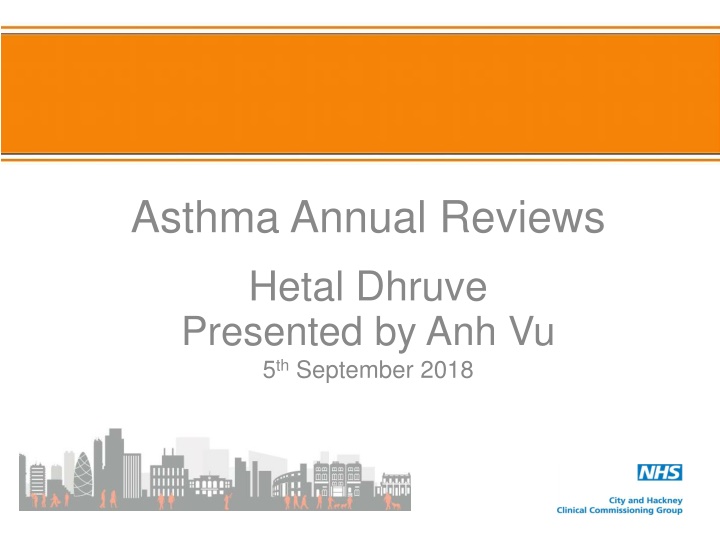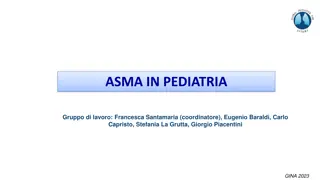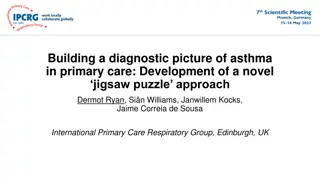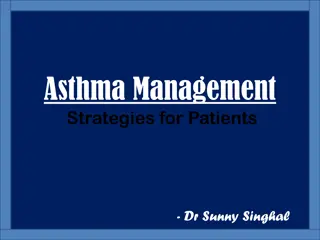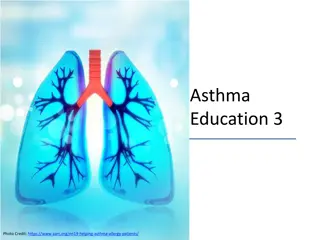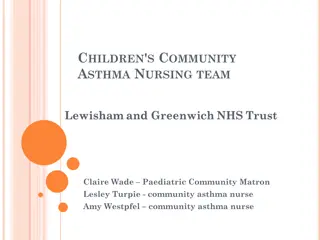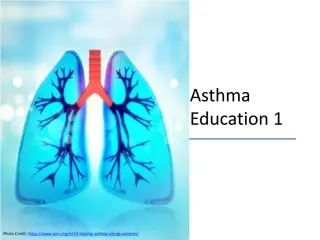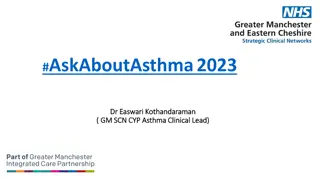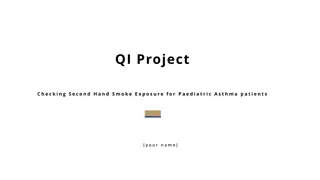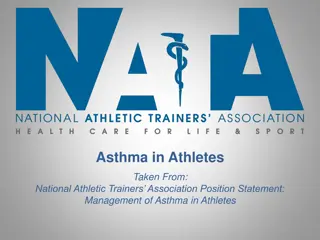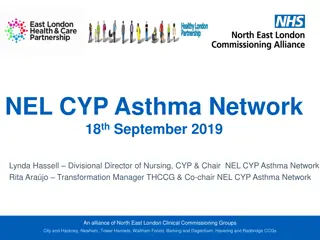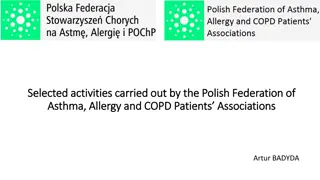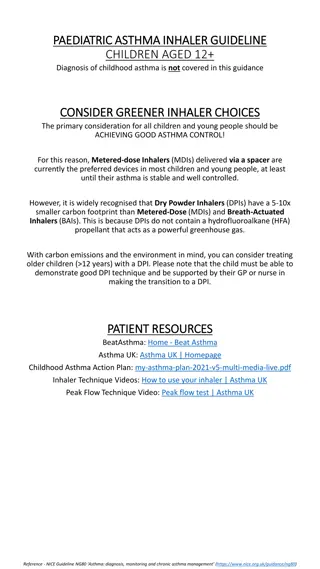Key Components of Asthma Management
Adherence, quality of life, good asthma control, exacerbations, and peak flow are crucial aspects in managing asthma effectively. Monitoring adherence to inhaler therapies, assessing asthma control, and addressing exacerbations are essential for improving patient outcomes and reducing risks associated with asthma. Understanding what constitutes good asthma control, including factors like exacerbation prevention and peak flow monitoring, is vital for healthcare professionals in providing optimal care for patients with asthma.
Download Presentation

Please find below an Image/Link to download the presentation.
The content on the website is provided AS IS for your information and personal use only. It may not be sold, licensed, or shared on other websites without obtaining consent from the author.If you encounter any issues during the download, it is possible that the publisher has removed the file from their server.
You are allowed to download the files provided on this website for personal or commercial use, subject to the condition that they are used lawfully. All files are the property of their respective owners.
The content on the website is provided AS IS for your information and personal use only. It may not be sold, licensed, or shared on other websites without obtaining consent from the author.
E N D
Presentation Transcript
Asthma Annual Reviews Hetal Dhruve Presented by Anh Vu 5thSeptember 2018
Currently.. QoF targets achieved for asthma reviews Self management plans issued Payments received However Rise in number of children dying with asthma in the UK 2016: 14 children died with asthma 2017: 17 children died with asthma Approx. 4000 admissions per year https://www.ons.gov.uk
Adherence Adherence is a key component of asthma management and yet studies have shown that in all severities of asthma, adherence to inhaled therapies is poor, with rates of non-adherence ranging from 30-70%. Every asthma review should include the number of inhaler issued in 12months; both ICS and SABA. This can give you an insight into the way in which the patient is managing their asthma ie. Clenil x 2 in 12 months. Salbutamol x 12 in 12months. This clearly suggests that the patient is non adherent to their ICS and using their salbutamol to manage their asthma symptoms.
Quality of Life QoF requires completion of the 3 RCP questions. The Asthma Control Test (ACT) adds to the RCP questions to give provide a score and suggests a level of control. Interestingly it also includes how well the patient thinks their asthma is controlled (Q5) and often despite being symptomatic, patients suggest that they think their asthma is well controlled. It is important to realign expectations of good asthma control.
What is good asthma control No exacerbations No daytime symptoms No need for rescue medication No night time wakening due to asthma No limitations on activity- including exercise Normal lung function; in terms of FEV1 and PEF > 80% predicted. Minimal side effects from medication. BTS/SIGN guidelines 2016
Exacerbations For a child to have good asthma control, they should not be exacerbating. If the patient is experiencing exacerbations, a referral to a specialist should be made.
Peak flow A good quality peak flow can be difficult to achieve for a child, but when done well is a good motivating tool for older children. If the peak flow (when done well), is significantly below that expected and the patient is experiencing symptoms an intervention needs to be made. Remember to ensure the patient s height has been updated to obtain the correct predicted PEF.
Inhaler technique 90% of patients do not know how to use a MDI. 91% of HCP who teach these patients, do not know how to use a MDI! Spacer increase drug delivery by 20% and should be offered to all patients. Patients are given different instructions from different HCPs. Using the 7 steps can help standardise inhaler technique assessment. All HCPs should use the UK inhaler group - inhaler standards and competency document to ensure they are competent in teaching inhaler technique. https://www.respiratoryfutures.org.uk/media/69775/ukig-inhaler-standards-january-2017.pdf Several resources available: www.rightbreathe.com Flashcards (available on the HLP website). Community pharmacist
Community pharmacists Great resource for patients with respiratory conditions. Utilising the national schemes of NMS and MURs. Inhaler technique Importance of adherence Self management Smoking cessation.
Asthma Severity Although removed for BTS/SIGN 2016 guidelines, required by QoF.
Action plan and follow up Action Plans are often generated and given to the patient but not completed correctly. Ensure the following is correct: - - - - Name, Colour and dose of preventer inhaler How and when to use the reliever inhaler What to do with worsening symptoms (PEF < 80% annual best) What to do in the event of an exacerbation (PEF < 60% annual best)
Wheeze Plan www.monkeywellbeing.com
Asthma Action plan 6-11 www.asthma.org.uk
Asthma Action plan > 12 www.asthma.org.uk
Any questions Please email hetal.dhruve@nhs.net
